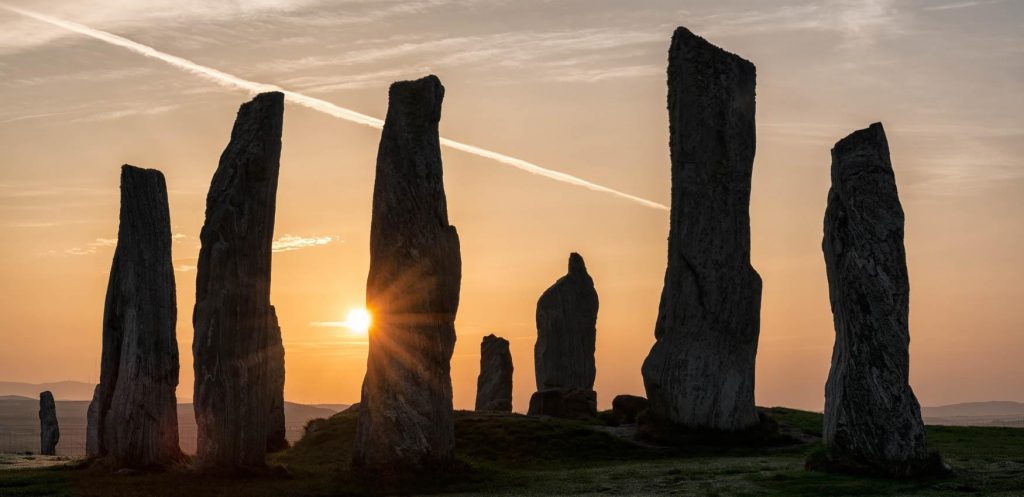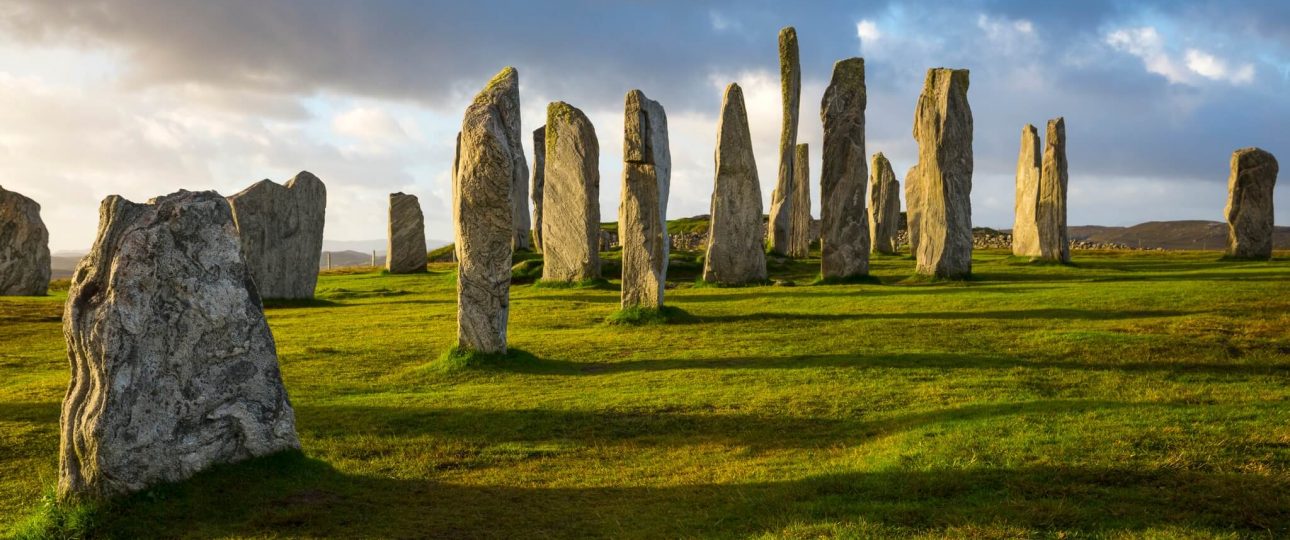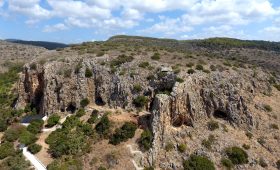Exploring the Calanais Standing Stones
The Calanais Standing Stones, also known as the Callanish Stones, are a remarkable prehistoric site located on the Isle of Lewis in Scotland’s Outer Hebrides. These ancient stones, erected around 2750 BC, predate Stonehenge and offer a fascinating glimpse into Neolithic life. Managed by Historic Environment Scotland, the site is a testament to the island’s rich history and cultural significance.
Historical Context and Structure
The Calanais Stones consist of a stone circle with thirteen stones, featuring a central monolith that stands 4.8 meters high. This monolith, resembling a ship’s rudder, is positioned slightly off-center within the circle. The stones are made from local Lewisian gneiss, adding to their unique character.
Five rows of standing stones extend from the circle, forming a cross-like pattern. The most prominent of these is the northern avenue, which stretches 83.2 meters and consists of 19 stones. The site also includes a chambered tomb, built later than the stone circle, nestled between the central and eastern stones.
Getting There
Visiting the Calanais Standing Stones requires a bit of planning due to their remote location. The stones are situated near the village of Callanish, overlooking Loch Roag. Here are some ways to reach the site:
- Fly: The nearest airport is Stornoway Airport, with flights from major UK cities. From there, you can rent a car or take a taxi to Callanish.
- Drive: For those who enjoy scenic drives, take the A859 road to the Isle of Lewis. The journey offers stunning views of the Scottish Highlands.
- Ferry: Ferries run from Ullapool on the mainland to Stornoway. Once in Stornoway, you can rent a car or use local buses to reach the stones.
Best Time to Visit
The ideal time to visit the Calanais Stones is from May to September when the weather is milder and daylight hours are longer. However, Scottish weather is notoriously unpredictable, so pack layers and be prepared for rain. Visiting during the summer solstice can be particularly rewarding, as the stones align with the rising sun, creating a stunning visual experience.
Exploring the Site
Start your visit at the Calanais Stones Visitor Center, operated by Urras Nan Tursachan (The Standing Stones Trust). The center offers exhibits that provide insight into the site’s history and significance. As you explore, you’ll be surrounded by the breathtaking landscape of rolling hills and Loch Roag, making it a perfect spot for photography.
Take your time to walk among the stones, appreciating their size and craftsmanship. The site is equipped with interpretive signage, and guided tours are available for those seeking a deeper understanding of the stones’ history and purpose.
Local Transportation and Accommodation
Despite its remote location, there are options for transportation and accommodation:
- Buses: Local bus services connect Callanish with other towns on the Isle of Lewis. Check schedules in advance.
- Taxis: Taxis can be booked for transport to and from the stones, though availability may be limited during peak seasons.
- Accommodation:
Near the Calanais Standing Stones in Scotland, visitors can find a variety of charming accommodations. Options include Gealabhat B&B, a cozy traditional croft house with loch views; Callanish View Cottage, a modern two-bedroom house with a hot tub and panoramic landscapes; and the 21 Callanish Luxury Glamping Pod, offering comfort and privacy just steps from the stones. For a more accessible stay, Callanish Stones Holiday Cottage provides level access and peaceful surroundings.
Local dining is limited but welcoming. The Calanais Stones Café (currently closed for renovation) usually offers snacks and light meals, while the Bernera Community Café serves homemade dishes nearby. For a more refined experience, Uig Sands Restaurant offers high-quality local cuisine with sea views, a short drive away.




